Atlantis-Scout
Contents Overview
Inhaltsübersicht
Book: Atlantis and Syracuse
Did Plato's experiences on Sicily inspire the legend?
A Study on Plato's Later Political Writings
|
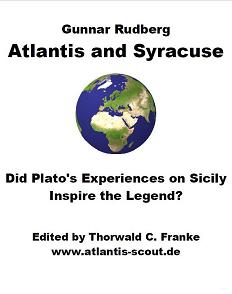
|
|
Author: Gunnar Rudberg
Editor: Thorwald C. Franke
Translator: Cecelia Murphy
Publisher: Books on Demand
Publication date: October 2012
Paperback: 120 pages
Preview PDF
ISBN: 978-3-8482-2822-5
Can be ordered world-wide with ISBN
Available only in English!
|
What is so fascinating about this book?
Syracuse was the place where Plato tried to approach his ideal state in reality – and failed because of the decadence and unjustness of the city and its ruler. Indeed, Syracuse shares many similarities with Plato's Atlantis: Like Atlantis, it was situated on a large and fertile island in the west, a city of abundant wealth and power. As in Atlantis, the ruler's castle and magnificent temples were gathered on a small island. As in Atlantis, there were several harbors, quarries and walls encircling the city. And like Atlantis, Syracuse waged war with Athens.
But what sounds like a hot trail to decipher the enigma of Plato's Atlantis lay forgotten for a long time: As early as 1917, far ahead of his time, Gunnar Rudberg wrote this most coherent scientific analysis. The world did not, however, take notice of a Swedish text. Translated now for the first time, Rudberg's thesis is still a very good read on Plato's Atlantis, presenting not only one of the most credible solutions for Plato's Atlantis, but also offering an introduction to Atlantis research in general; the work confronts today's prevailing hypotheses with valuable criticism. Also included is a remarkable classification scheme of ancient and modern Atlantis hypotheses.
Gunnar Rudberg (1880-1954) was an internationally renowned Swedish
classicist, Professor of Classical Philology and Greek Language and Literature
at the universities of Oslo and Uppsala. Rudberg’s scientific works had
Plato as their focus.
"After this examination, it seems to me all but inevitable that
Plato, when developing this portrayal of Atlantis, had the Dionysians’
Syracuse in mind." (Gunnar Rudberg)
Opinions about the book
News magazine FOCUS Online, October 2013:
"... but it is more than fiction. 1917 the Swedish classicist Gunnar Rudberg
published a lenghty article 'Atlantis och Syrakusai' ... According to the
scholar Plato's account mirrors the geographical, social and political
situation on Sicily and its metropolis Syracuse, the biggest bulwark in
antiquity. ... The parallels in landscape and agriculture are indeed
impressive. ... Syracuse was a military super power: It decisively defeated
Athens in 413 BC ... The strong man was the tyrant Dionysius I, whom Plato
personally got to know during his first Sicilian journey around 388 BC. Gunnar
Rudberg's thesis fits well to Plato's biography."
Review by Dr Anna S. Afonasina in ΣΧΟΛΗ journal, Vol. 8 Issue 2 (2014); pp. 249-256:
"In general, the book is quite interesting. A review of the literature ... makes it possible to quickly get acquainted with the entire literary tradition devoted to the theme of Atlantis. The very idea of comparing Atlantis and Syracuse is presented quite convincingly." (Original and Translation)
Video book presentations (English and German)
Table of Contents
- Atlantis and Syracuse, by Gunnar Rudberg
- Part I
- Part II
- Part III
- Part IV
- Part V
- Maps of Ancient Syracuse
- Rudberg's taxonomy of Atlantis hypotheses
- Biographical Notes on Gunnar Rudberg
- Epilogue, by Thorwald C. Franke
- Rudberg's theses
- International Reaction 1917-1956
- Platonica Selecta 1956
- International Reaction 1956-2012
- Modern criticism of Atlantis och Syrakusai
- What remains of Atlantis och Syrakusai?
- Appendix A: Editor's notes
- Appendix B: Bibliography
Contact the editor
The editor Thorwald C. Franke can be contacted by e-mail:
info@atlantis-scout.de
Requests for free copies: Everybody who is willing to write a public review (in journals, blogs, Amazon, wherever) can ask for a free copy. Please provide the name of the publication where the review will be published, and a postal address for shipment.
Addenda & Corrigenda: If you have found an error, please report the error to the editor! All errors are collected in the following public PDF and will be considered in a possible next edition:
Rudberg_AtlantisSyracuse_Addenda.pdf
General information about Syracuse
Maps
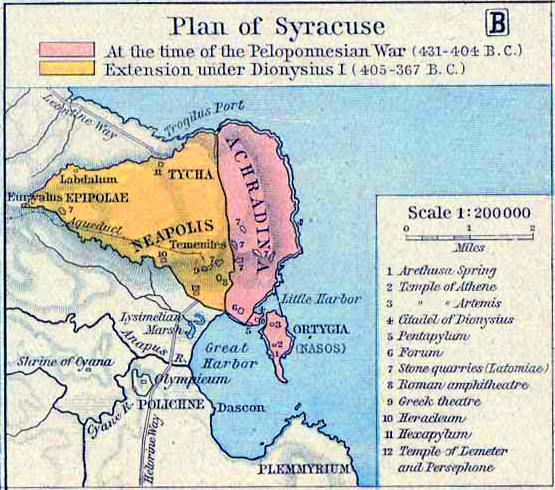
"Syracuse – that illustrious city which Timaeus calls the greatest of the
Grecian towns. It was indeed a most beautiful city; and its admirable citadel,
its canals distributed through all its districts, its broad streets, it
porticoes, its temples, and its walls, gave Syracuse the appearance of a most
flourishing state."
(M. Tullius Cicero)
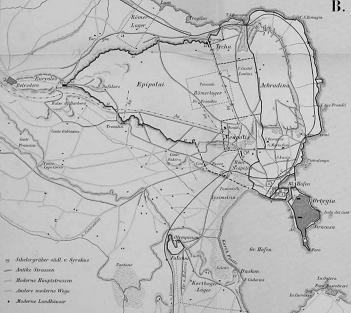
Fotos
|
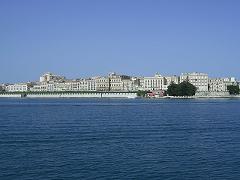
Syracuse's central island Ortygia,
seen from the west.
Center: Baroque tower of the Cathedral,
i.e. former temple of Athena.
Extreme right: Arethusa spring.
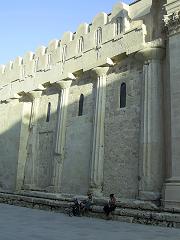
Temple of Athena, today Cathredal:
Temple columns in outside wall.
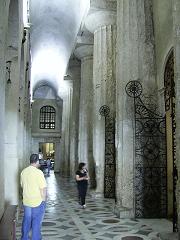
Temple of Athena, today Cathredal:
Temple columns in the church.
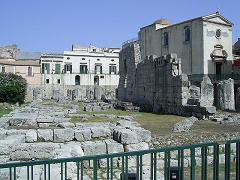
Temple of Apollo,
formerly known as temple of Artemis,
northern part of the island Ortygia.
|
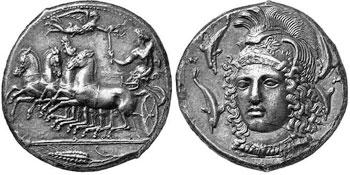
Ancient Syracusean coin
with goddess Athena and chariot.
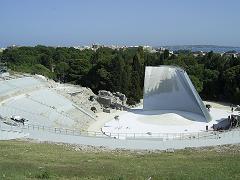
Greek theatre,
prepared for a modern-time performance.
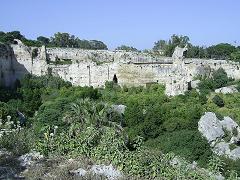
Latomiae quarries,
with Mediterranean vegetation.
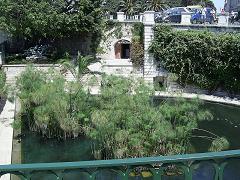
Arethusa spring,
western side of the island Ortygia.
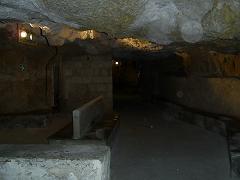
Underground water conduit system
under the island of Ortygia.
|
External Weblinks
Wikipedia:
Syracuse, Sicily
Plato's Atlantis
Plato's Seventh Letter
Gunnar
Rudberg
archive.org:
Lupus 1887: Syrakus im Altertum
Ludwig Marcuse 1947: Plato and Dionysius
Google Books:
Mary Renault 1966: The Mask of Apollo
Google Maps:
Walk through the streets of today's Syracuse!
www.atlantis-scout.de
Contents Overview
Inhaltsübersicht
COPYRIGHT © Sep 2012 Thorwald C. Franke
Legal Notice!










